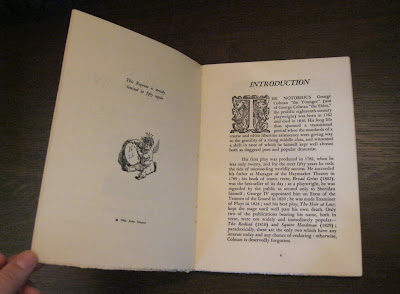
Squire Hardman ranks as John Glassco's most accomplished, audacious and outrageous hoax. It's also by far the least common of his books – fifty copies – which pretty much explains why it has received so little attention. Infamous, yet unknown, like the very best literary hoaxes the work's history is as complex as it is entertaining.
Though 1320-lines, Squire Hardman is one of the very few poems that Glassco wrote with any ease – but then, he rarely struggled when writing pornography. His inspiration was The Rodiad, a flagellantine fantasy in verse that is ascribed erroneously to the nearly-forgotten English playwright George Coleman the Younger. Glassco's Squire Hardman is similar in style and theme, though it does depart in one important manner; where in The Rodiad the flagellator is a man, the hand wielding the whip in Squire Hardman belongs to a woman. Here Glassco's own fantasies and desires hold sway.
Squire Hardman would be Glassco's only self-published book. In 1966, fourteen years after composition, he hired a printer in Waterloo, Quebec to produce the fifty, along with a handbill offering the book at ten dollars, postage-paid. This advertisement, describing Squire Hardman as “unquestionably the most brilliant flagellantine poem ever written", was subsequently mailed to academic institutions in Canada and the United States.
As he had in composing the poem, Glassco went to great lengths to mimic the early nineteenth-century style that had been employed in The Rodiad, right down to the title page. He was justifiably proud, writing poet Daryl Hine: “The introduction is in my best dated and documented style of Hoaxery; the nice title-page, decorations, layout are all mine too; I even stuck the labels on the covers."
Central to the hoax was a five-page Introduction, written by Glassco, in which he discusses Colman while comparing and contrasting The Rodiad and Squire Hardman:
The truth is that the two poems can be ascribed to Colman on the basis of internal evidence alone; and strong as this is, it is not really conclusive. All that can be affirmed with certainty is that both poems are by the same hand, and that their brilliance cannot lower the reputation of a writer who usually compounded coarseness with the graver faults of hypocrisy and dullness – from both of which these two poems are at any rate free.
In this mischievous bit of prose, Glassco feigns wonder that The Rodiad has been "reprinted many times”, while its "companion piece", Squire Hardman has been all but ignored. The hoaxter himself considered reprinting, even going so far as to commission illustrations from Philip Core (then a 15-year-old schoolboy). However, the idea was abandoned and the artwork was relegated to a brown paper envelope. A Gentleman of Pleasure features one of Core's previously unpublished illustrations.
Fifteen copies are held by libraries in Canada, the United Kingdom, the United States and Australia. The remaining 35 are, presumably, in private hands. My copy was purchased twenty-two years ago for US$100 from a New York bookseller – I've not seen a single copy for sale since.
Though Squire Hardman has never been reprinted on its own, the poem is currently available alongside The Rodiad, "Punishment Day", "I Never Saw Her Coming" and "The Nursery Tea" in an anthology titled Punitive Poetry. The publisher, AKS Books of Bexhill-on-Sea, Essex, also sells Glassco's other flagellantine classic The English Governess. Both are published without the permission of the author's estate. Very naughty.





No comments:
Post a Comment